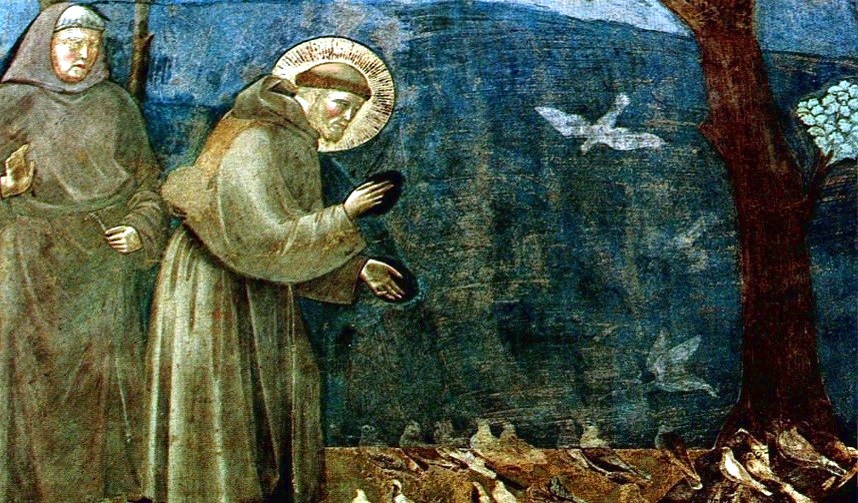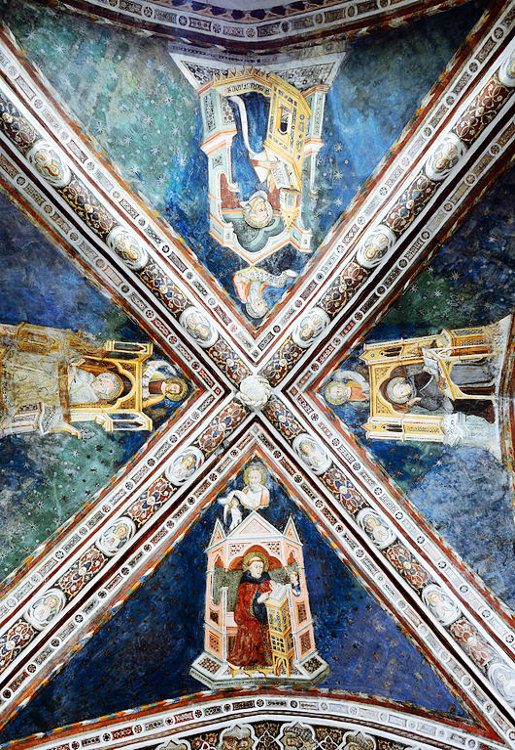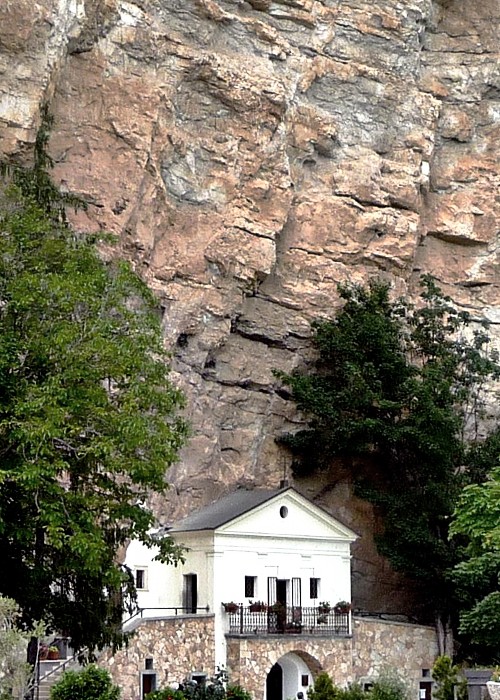St. Francis' trail
Praying at the Castle
The Age of Spirit


In 1223, when Saint Francis came to Rome from Umbria to have his Order recognized by the Pope Onorio III, he was hosted by the Benedictines at the Monastery of Sacro Speco in Subiaco. Here, in the Chapel of Saint Gregory of the Sacro Speco, is the only portrait of Saint Francis taken of him alive. The Benedictines donated a monastery to Saint Francis on the other side of the River Aniene, which has been a Franciscan convent ever since: the Convento di San Francesco, Subiaco.

This monastery has beautiful frescoes and works of art, such as the triptic over the main altar by Antoniazzo Romano (1430-1508 AD) and is worth the visit.
At the same time, Saint Francis also spent some time in prayer near by at Bellegra, which he found to be a mystical place. Ever since the Franciscan Order has turned it into a place of prayer and meditation (Ritiro San Francesco, Bellegra).
The most publicized trail strangely does not mention such an important part of his itinerary, from Subiaco to Rome. The story is that, as he was approaching Rome, the Pope had several dreams of a man preventing a church building from collapsing. In the last of these dreams he saw his face, which he recognized in Saint Francis once he stood before him. At that point the Pope understood that Francis was sent by God, and authorized his Order.
When the Pope said that there was paper work to prepare and sign, Saint Francis quickly said that Our Lady Mary was the notary, so that the “bureaucracy” was unnecessary!
To this day the Franciscan Orders do not have their foundation act.
Perched on the mountain like an eagle’s nest, at 1337m on the Monte Autore, this greatly venerated shrine (Santuario della SS Trinità di Vallepietra) was probably built over a pagan temple of much older origins.
There are two legends regarding its Christian origins. The first one was written in an ancient parchment which has now disappeared, but a copy was found and it says that two Christians from Ravenna, escaping from Nero’s persecution in Rome, settled here and met Saint Peter and Saint John; the two Apostles were coming from the Holy Land, having landed by sea at the port of Francavilla. The legend has it that an angel brought them some food and made a wellspring pop up from the land, while the frescoe of the Holy Trinity appeared on the stone wall to the four in prayer.

The other legend is about a farmer whose plough, while working at the Tagliata hill, went down a ditch along with the animals. When he enterd the cavern to rescue them, he found the animals kneeling infront of a mysterious painting of the Holy Trinity.
Historical research leads us to think that probably its origins are of Christian cult coming from Byzantium (Constantinople), as was in the rest of the valley before the arrival of Saint Benedict, and as the beautiful byzantine frescoes in this shrine and others in the valley seem to confirm.